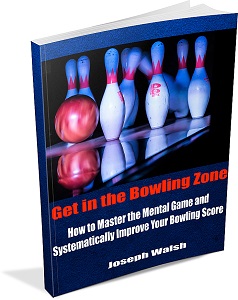Ball speed is an important metric in bowling. It affects your hook, it determines the degree to which your ball reacts to the lane, and the mechanics involved play an important role in your release and direction. So you want to be aware of the speed that you’re throwing.
Helpfully, most bowling alleys include your ball speed on the monitor screen. We’ve explored the ideal bowling ball speed in a previous article, and came up with these rough guidelines: 21 mph at the release and 17 mph at the pins.
But the difference between these two speeds leaves a crucial question for those trying to evaluate their own shot. Where exactly is my shot speed being recorded at my local alley?
The ball speed is usually calculated at the pins, or more specifically, a little bit in front of them. So going back to our general guidelines, that will mean that the 17 mph speed is considered to be optimal.
But if you’re comparing your speed to someone else’s you hear about or see on TV, you want to make sure you aren’t comparing speeds taken at a different time.
It’s also unwise to take too much stock in the speed reading given on your alley’s display, because it might not be that accurate.
The calibration of the device can be shaky in many alleys, so instead of obsessing over the speed, care about your consistency. If you’re regularly varying by more than 3-4 mph, for example, that’s cause for concern. Ditto if your speed is quite far from the target of about 17 mph, such as 10 mph or less. But don’t fret about a speed that’s a few of mph away from the “optimal” guidelines we’ve given: it’s much more worthwhile to focus your energy on staying relaxed and hitting your target.
Have you worked on your bowling ball speed to make it faster or slower? If so, what types of adjustments did you make?


I coated my ball with peanut butter to slow it down